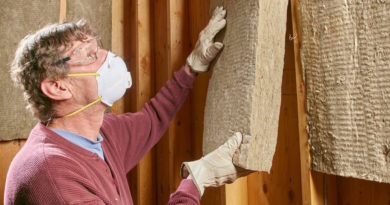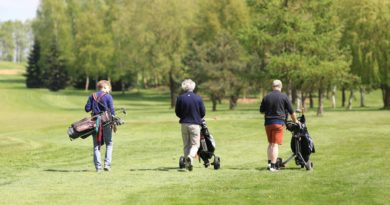A Scottish Autumn Break
Autumn is a wonderful time to visit Scotland, and a perfect time to enjoy the landscape in my favourite region Dumfries and Galloway.
The summer midges have departed, and there are fewer tourists at this time of year. It is a pleasure to walk in the rolling farmland and hills with their seasonal russet and gold colours and the purple heather in bloom.
It is a good time to observe the local wildlife and one of the greatest natural spectacles here is to watch the flocks of barnacle geese that come down in September from Svalbard in the Arctic Circle to winter in the Solway salt flats.
There are also hidden cultural pleasures to discover, such as the annual Wigtown Book Festival, one of the largest of its kind in the UK, which this year will be held from 22 September to 1 October.

Wigtown is a small and pretty coastal town at the head of the Machars peninsula, with a population of about 1 000 residents, and is home to a concentration of second hand bookshops. It is a great place for browsing through the book collections over a cup of tea; one of my favourite shops is Beltie Books, named after the famous Belted Galloways from the region, which serves brilliant coffee and delicious cakes.
Wigtown was officially designated as Scotland’s national book town in 1997, rather like the village of Hay on Wye in Wales, and since 1999 it has successfully hosted a book festival every autumn. The festival is a ten-day literary festival attracting almost 10 000 visitors every year who come for a variety of lectures, and cultural events. It hosts an annual poetry competition and awards three separate prizes for compositions in English, Scottish Gaelic and Scots.
Many of the Festival lectures and book presentations are housed in the County Hall, which is a splendid Victorian building dating back to 1862 and built in a French Gothic style that would not be out of place in the town square of a Belgian town. To give it a uniquely rural Scottish flavour, a family of peregrine falcons have set up home in the clock tower where they regularly nest and roost.
With many international visitors coming to the Wigtown Book Festival, accommodation in the town tends to get booked early, but there are many self-catering options on offer from the agency Discover Scotland located in nearby Castle Douglas. From the comforts of your own rental cottage you can explore the rich history of the region, and return to enjoy a wee dram from the local Bladnoch distillery in front of a crackling log fire.
The town of Castle Douglas takes its name from nearby Threave Castle which is a formidable fortress tower built in 1369 by Archibald the Grim, a notorious leader of the warlike Black Douglas clan. The castle lies on an island in the River Dee, and is reached by a short ferry crossing over the fast flowing salmon river. Other outstanding castles in the region include Caerlaverock which stands on the banks of the Solway Firth and was built to defend the Scottish southern border with England.
This part of Scotland is also home to many of Scotland’s early Christian sites, including Whithorn, Dundrennan Abbey and Sweetheart Abbey in the town of New Abbey which house the remains of Lady Devorgilla the founder of this cistercian abbey and her beloved husband John Balliol, who established the college in Oxford University that bears his name.
No visit to Dumfries and Galloway would be complete without sampling its rich local agricultural produce; there is an excellent range of organic cheeses available in the village of Beeswing (which takes its name from a famous racehorse) at the Loch Arthur Creamery. Most of the local butchers also take great pride in telling you from exactly which local farm their lamb and beef is sourced; my personal favourite is TH Carson in Dalbeattie which has a formidable array of prizes for quality products ranging from haggis to hog roast sausages.
If the weather permits, then there are several excellent golf courses to choose from in the region, including a scenic course at Colvend and a championship links course at Southerness. The village of Carsethorn along the coast from Southerness attracts many visitors from the USA, as it houses a small museum to the village’s local hero, Admiral John Paul Jones. The museum is in the gardener’s cottage for the Arbigland Estate, where John Paul Jones was born and brought up, before he emigrated to North America, later becoming the father of the American Navy during the American War of Independence against Britain – a different kind of 18th century Brexit.



